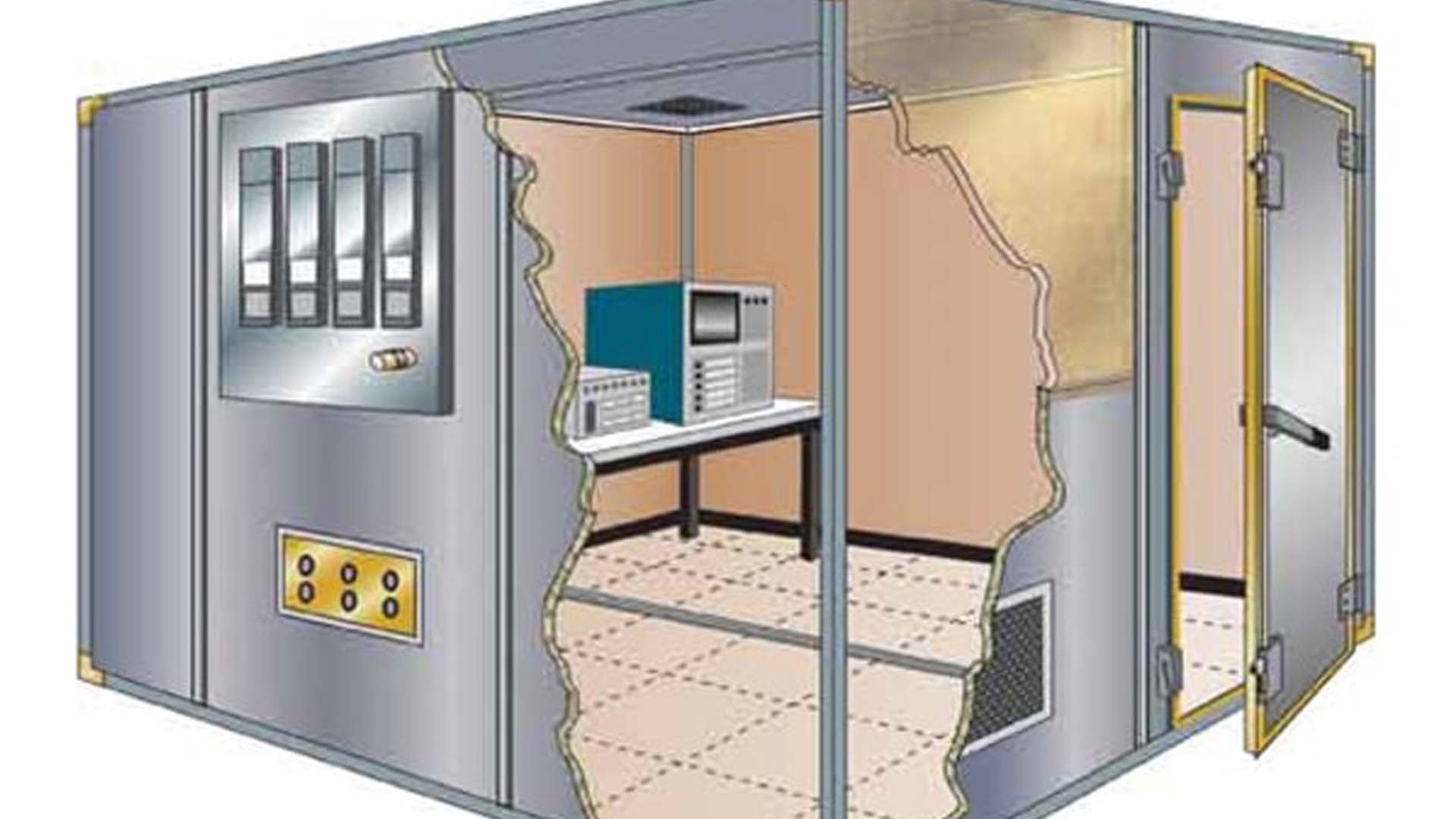A Complete Guide to Conduiting EMF Copper Shielded DOD Rooms and Data Centers Using EMT
When building secure environments such as military-grade Faraday cages or highly sensitive data centers, electromagnetic field (EMF) shielding is a non-negotiable requirement. These rooms, typically lined with copper shielding, are designed to block external electromagnetic interference (EMI) and contain internal emissions. However, one often overlooked challenge is the correct method for running electrical metallic tubing (EMT) conduit through these shielded rooms. This article covers how to conduit EMF copper shielded DOD rooms and data centers, detailing the necessity of isolating EMT from the copper shielding, using ground breaks, and properly bonding conduit to the appropriate system ground.
🧲Understanding the EMF Shielded Environment
Before diving into installation methods, it’s essential to understand why EMF copper shielded rooms exist. DOD applications demand environments free of radio frequency interference (RFI) for mission-critical systems, signal intelligence operations, and secure communications. Similarly, high-security data centers require clean electrical signals to prevent data corruption, latency, and interception.
A typical shielded room uses continuous copper foil or copper panels grounded to create a Faraday cage. This shield attenuates both incoming and outgoing RF signals, protecting sensitive equipment. Any electrical or mechanical penetration, including conduit, must be handled with extreme care to preserve shielding integrity.
🛡️The Challenge with EMT in Shielded Rooms
EMT conduit is a standard in commercial and industrial electrical systems due to its rigidity, ease of installation, and code compliance. However, when EMT penetrates a copper shielded environment, it presents a serious EMF leakage and bonding risk. Improper bonding can turn EMT into an antenna or allow noise to bypass the Faraday cage altogether.
The primary concern is galvanic bonding between dissimilar metals (steel conduit touching copper) and the unintentional coupling of the shield to building ground in a way that defeats the isolation of the shield. This is where proper conduit installation becomes critical.
How to Conduit EMF Copper Shielded DOD Rooms and Data Centers: Step-by-Step Process
Step 1: Plan for Penetration Points
The first step in how to conduit EMF copper shielded DOD rooms and data centers is pre-planning conduit entry and exit points. Penetrations through copper shields should be minimized and planned in consultation with shielding engineers.
Use pre-fabricated RF waveguides or shielded conduit feedthroughs whenever possible. Ensure conduit runs enter through designated bulkhead openings or via shielding-approved passthrough gaskets that allow isolation.
Step 2: Use Ground Break Fittings
To properly isolate the conduit from the copper shielding, utilize ground break fittings (also called isolation bushings or dielectric unions). These fittings prevent direct electrical continuity between the steel conduit and the copper shield, maintaining shield integrity and preventing galvanic corrosion.
Install ground break fittings at both sides of the shield wall, or wherever the EMT transitions from shielded to unshielded space. These fittings typically include insulating sleeves made of Teflon or another dielectric material to ensure separation.
Step 3: Bond EMT to System Ground
After isolating the copper shielding from the EMT conduit, it’s crucial to bond the conduit to the appropriate system ground. For DOD environments and mission-critical data centers, this ground is typically the Signal Reference Grid (SRG) or a dedicated Equipment Grounding System (EGS).
Do not bond the EMT directly to the copper shielding. Instead, use code-compliant grounding bushings to bond the EMT to the building’s designated electrical ground system. This prevents the conduit from floating electrically or acting as an EMI re-radiator.
Ground conductors must be sized according to NEC Article 250 and follow the facility’s grounding design. Bonding jumpers must be continuous, secure, and tested after installation.
Step 4: Seal the Shield Penetration
After the EMT conduit is isolated and bonded, the penetration itself must be sealed to maintain the EMF shielding performance. Use RF-rated conductive gaskets, honeycomb vents, or shielded conduit feedthrough systems approved for use in secure installations.
Apply conductive tape or copper shielding mesh around the entry point as needed, and test the area for leakage using a field strength meter or RF signal injection. For high-security facilities, this is typically verified during commissioning by a third-party test lab.
Step 5: Document and Inspect the Install
A final step in how to conduit EMF copper shielded DOD rooms and data centers is proper documentation and quality assurance. All isolation points, bonding paths, and shielding integrity must be documented with as-builts. Photos, torque readings on fittings, and test results should be archived in the system O&M documentation.
Schedule an inspection with the facility's RF shielding specialist or consultant before closing any walls or ceilings. This ensures long-term compliance and avoids costly remediation.
Common Pitfalls to Avoid
While learning how to conduit EMF copper shielded DOD rooms and data centers, avoid these common mistakes:
- Directly grounding EMT to the copper shield: This defeats the Faraday cage design.
- Using EMT as a signal reference or equipment ground: Conduit should never substitute for a proper ground conductor.
- Failing to bond conduit after isolating it: Electrically floating conduit is hazardous and invites EMI issues.
- Improper sealing of conduit penetrations: Even small gaps compromise shielding effectiveness.
- Assuming NEC compliance is sufficient: Shielding requirements often exceed standard code.
Why It Matters
Improper conduit installations in EMF copper shielded DOD rooms and data centers can lead to:
- EMF leakage and RF interference.
- Loss of compliance with TEMPEST or SCIF standards.
- Data corruption or latency in high-speed networks.
- Compromised national security in defense applications.
- Expensive remediation and testing delays.
Following the right procedures for how to conduit EMF copper shielded DOD rooms and data centers ensures signal security, equipment longevity, and compliance with military and federal shielding protocols.
The Wrap
Installing EMT conduit in EMF copper shielded rooms requires precision, planning, and a deep understanding of both electrical and shielding best practices. By isolating conduit with ground breaks, bonding it properly, and preserving the shield's integrity, you can achieve robust EMF protection for both DOD and data center applications.
This is not just a matter of code compliance—it's a matter of mission assurance, data integrity, and national security. Mastering how to conduit EMF copper shielded DOD rooms and data centers is essential for engineers, contractors, and facility managers involved in these high-stakes environments.
📞⚡ Call Today — Ensure your installation is done correct with the right contractor!

